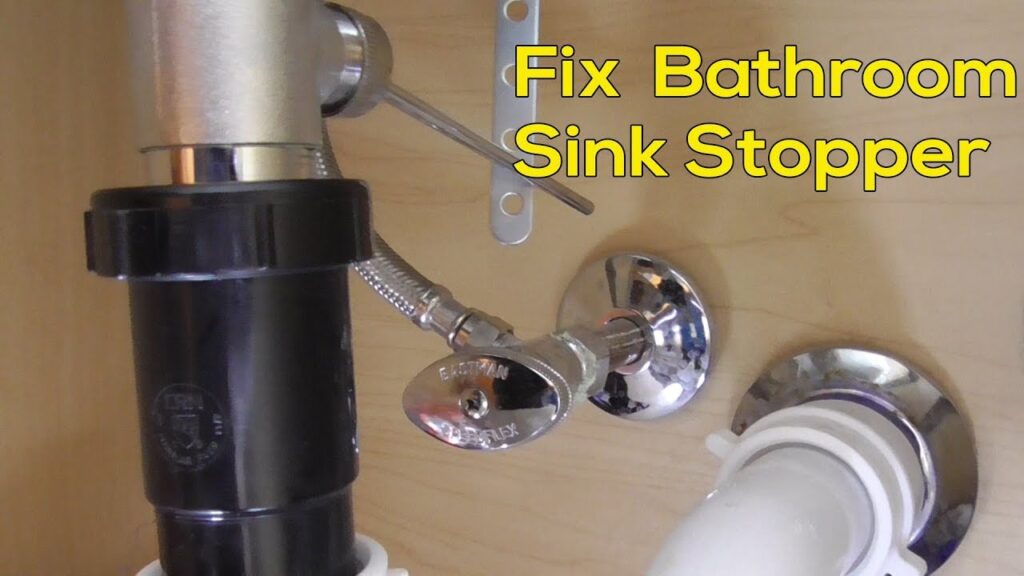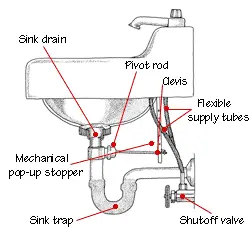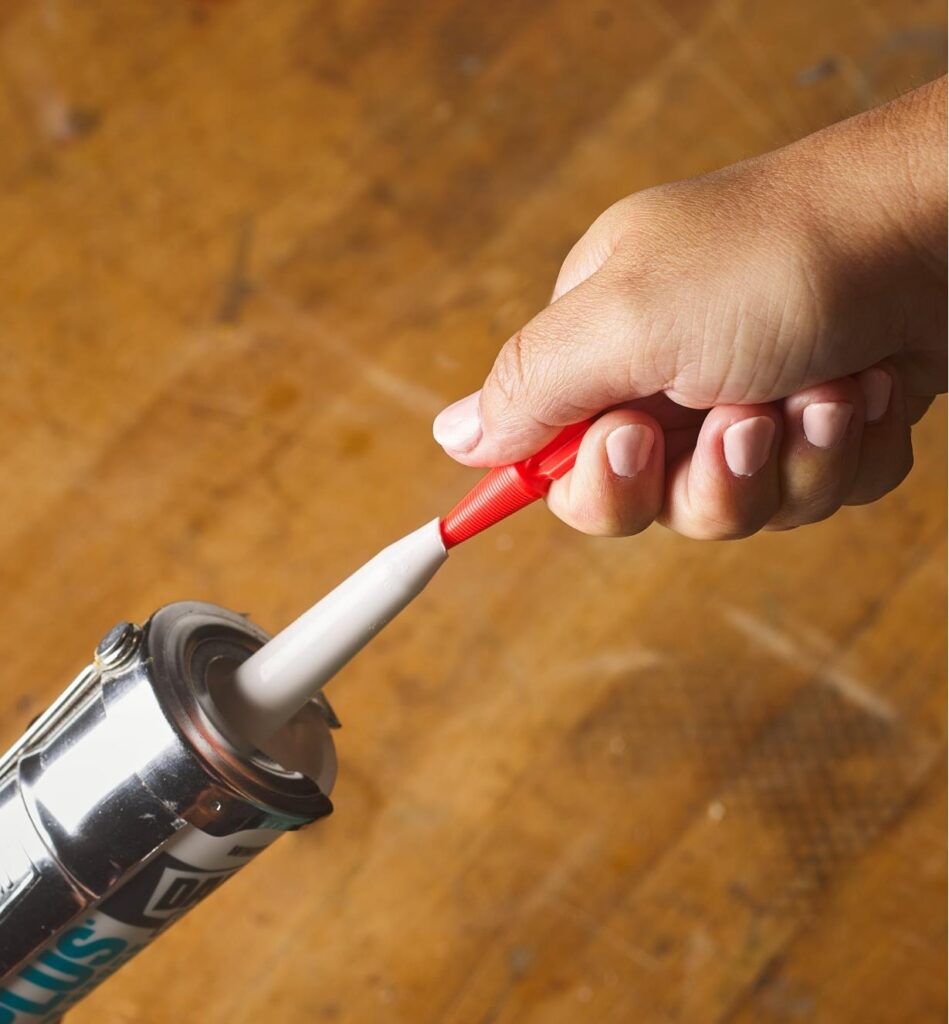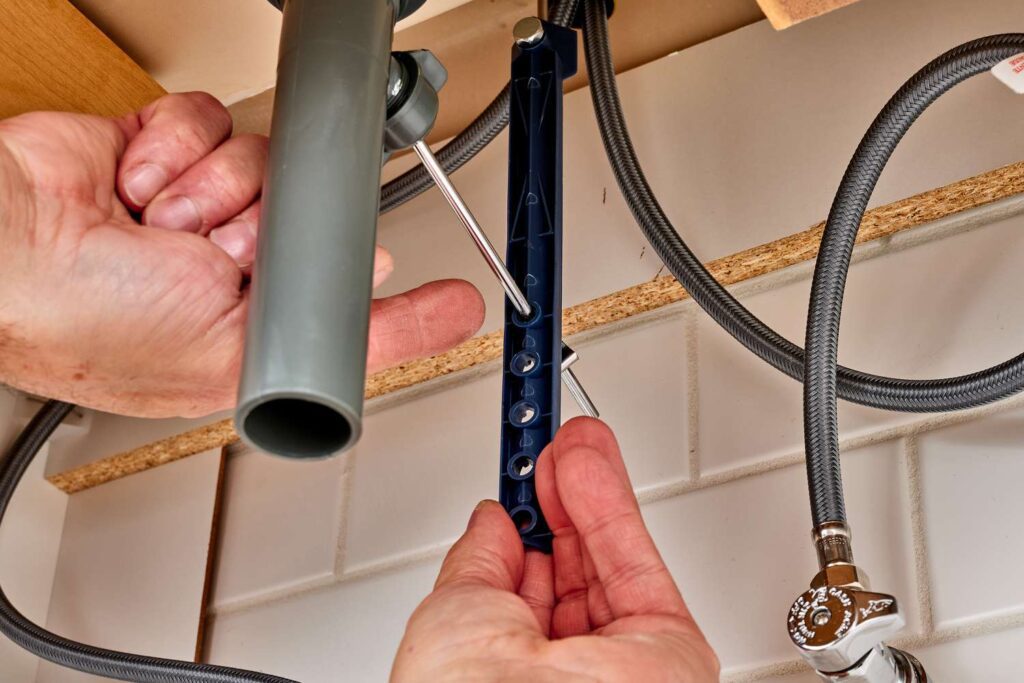Introduction

The common issue of sink stoppers getting stuck.
Ah, the age-old problem of a sink stopper stuck in place. We’ve all been there, haven’t we? One moment you’re washing your hands, and the next, you’re wrestling with a stubborn sink stopper that refuses to budge. It’s a common issue that many homeowners face, and it’s often due to a variety of reasons, from foreign objects in the drain to a simple build-up of gunk.
Importance of addressing the problem promptly.
Ignoring a stuck sink stopper can lead to bigger problems down the line. From drain cleaning nightmares to potential damage to the sink’s mechanism, it’s crucial to address the issue sooner rather than later. But fear not! Whether you’re a DIY enthusiast or someone who’s never touched a wrench, this guide is here to help. We’ll delve into the methods to remove sink stoppers, the common sink stopper problems, and why it’s essential to remove a sink stopper when it’s acting up.
2. Why Does a Sink Stopper Get Stuck?
Ah, the age-old question that has puzzled many a homeowner. You might be thinking, “It’s just a simple mechanism, so why does my sink stopper get stuck?” Well, my friend, let’s dive deep into the world of sink stoppers and uncover the mysteries behind their stubborn behavior.
Overview of the mechanics behind sink stoppers.
At the heart of every sink is its stopper mechanism, a seemingly simple yet intricate device. The sink stopper assembly consists of various components, including the pop-up plug, lift rod, clevis screw, and pivot rod connection. These parts work in tandem to ensure that water stays in when you want it to and drains out when you don’t. But like all things, they’re not immune to problems.

Common reasons: build-up, foreign objects, and wear and tear.
- Build-up: Over time, soap scum, hair, and other debris can accumulate, leading to sink drain clogs. This build-up can hinder the sink stopper’s movement, causing it to get stuck in the open or closed position.
- Foreign Objects: Ever dropped a ring or earring down the sink? These foreign objects can get lodged, causing sink stopper problems.
- Wear and Tear: Like all things, sink stoppers aren’t immune to the ravages of time. The constant movement, combined with exposure to water and cleaning agents, can lead to wear and tear. Components like the spring clip, horizontal pivot rod, or even the pop-up plug tailpiece can deteriorate, leading to a stuck sink stopper.
3. The Art of Removing a Sink Stopper
Methods to remove sink stopper: DIY fixes vs. professional help.
Before you start panicking and considering a complete sink overhaul, know that many sink stopper problems can be fixed with a bit of know-how and elbow grease. From the suction cup method to adjusting the pivot rod, there are several methods to remove sink stoppers. However, if you’ve tried your hand at DIY fixes and the stopper remains defiantly stuck, it might be time to call in the plumbing experts.
Sink stopper troubleshooting steps and common mistakes.
Troubleshooting a stuck sink stopper is a systematic process. Start by checking for any visible obstructions, like hair in the drain or a foreign object. Next, inspect the stopper mechanism for signs of wear and tear. Look out for a rusted pivot rod, broken pop-up plug, or issues with the spring clip. Remember, while it’s tempting to force the stopper to move, this can cause further damage. Always approach the problem with patience and care.
4. Maintaining Your Sink Stopper for Longevity
Sink stopper maintenance routine and regular checks.
To ensure your sink stopper remains in tip-top shape, it’s essential to establish a regular maintenance routine. This includes:
- Regular sink cleaning to prevent debris accumulation.
- Checking the stopper mechanism for signs of wear and tear.
- Ensuring the pivot rod is free from rust.
- Periodically replacing worn-out components like rubber drain plugs or the pop-up assembly.
Sink stopper best practices and expert advice.
Always handle your sink stopper with care. Avoid using harsh chemicals that can corrode the components. If you’re unsure about any aspect of sink stopper maintenance or repair, don’t hesitate to consult plumbing professionals. They can offer expert advice, brand recommendations, and even step-by-step instructions to ensure your sink stopper functions smoothly.
5. Quick Fixes for a Stuck Sink Stopper
Ah, the dreaded stuck sink stopper! It’s a common issue that many homeowners face, but with the right techniques and a bit of patience, you can get that stopper moving smoothly again. Let’s dive into some quick fixes that even beginners can tackle with confidence.

5.1. The Pulling Technique: Gripping and twisting the stopper.
Before you dive into more complex methods, sometimes a simple grip and twist can do the trick. Wear a pair of rubber gloves for a better grip, gently grasp the stopper, and try twisting it clockwise and counterclockwise. This can often dislodge any minor obstructions and get your sink stopper moving again.

5.2. Using a Suction Cup: How plungers can come to the rescue.
The suction cup method, often associated with the common plunger, can be a lifesaver. Place the plunger over the drain, ensuring it has a good seal. Press down and pull up vigorously a few times. The suction can help dislodge the stopper or any foreign object in the drain causing the obstruction. Remember, this method is especially effective for issues related to pressure build-up.
5.3. Checking the Spring Clip: Ensuring it’s attached and functional.
The spring clip is a vital component of the sink stopper mechanism. If it becomes detached or malfunctions, it can lead to sink stopper problems. Check to ensure the spring clip is securely attached to the clevis strap. If it appears damaged, consider getting a replacement part.
5.4. Addressing Horizontal Pivot Rod Issues: Dealing with rust and replacements.
The horizontal pivot rod plays a crucial role in the sink stopper’s movement. Over time, especially if it’s made of steel, it can rust, leading to a stuck sink stopper. Inspect the rod for signs of rust or wear and tear. If it’s rusted or damaged, consider replacing it. Brass pivot rods tend to be more resistant to rust than their steel counterparts.

5.5. Inspecting the Pop-Up Plug: Identifying and fixing broken ends.
The pop-up plug is the part of the sink stopper that you see inside the sink. Over time, it can wear out or break. If the end of the pop-up plug appears damaged or broken, it might be time for a replacement. Ensure you choose a quality pop-up plug that’s compatible with your sink’s specifications.
6. When DIY Fixes Don’t Work
Sometimes, despite your best efforts, the sink stopper remains stubbornly stuck. In such cases, it might be time to call in the plumbing experts. They have the tools, knowledge, and experience to address more complex sink stopper problems and can offer solutions that might not be apparent to the average homeowner.
7. Advanced Solutions
When the usual tricks of the trade don’t seem to do the trick, it’s time to roll up those sleeves and dive a bit deeper. Sometimes, the issue with a stuck sink stopper requires more than a quick fix. But don’t worry, with the right guidance and a bit of determination, you can tackle even the most stubborn of sink stopper problems.
7.1. Removing Sink Parts: Dismantling and reassembling for a thorough fix.
Alright, brave soul, if you’re considering removing sink parts, it means you’re ready to get hands-on. Here’s a step-by-step guide to help you out:
- Safety First: Turn off the water supply to your sink. We don’t want any unexpected geysers!
- Inspect the Assembly: Familiarize yourself with the sink stopper components. This includes the lift rod, clevis screw, pivot rod connection, and the notorious pop-up plug.
- Disconnection: Gently disconnect the pivot rod from the clevis strap. This will free up the stopper, allowing you to lift it out.
- Cleaning Time: With the stopper out, it’s a good time for some drain cleaning. Remove any hair, soap scum, or foreign objects in the drain.
- Reassembly: Once everything is clean, reassemble the components. Ensure the spring clip is securely attached, and the horizontal pivot rod is rust-free. If you notice a rusted pivot rod or a broken pop-up plug, consider replacing them.
7.2. Replacing the Entire Assembly: When to consider this option and how to go about it.
Sometimes, the best solution is to start fresh. If your sink stopper assembly shows significant wear and tear, or if you’ve faced recurring issues, it might be time to consider a replacement.
- Choose Quality Replacement Parts: Whether you’re looking at brass or steel pivot rods, push-down stoppers, or pop-up stoppers, always opt for quality brands. Remember, investing in good materials now can save you headaches down the line.
- Seek Expert Advice: If you’re unsure about the type of stopper suitable for your sink, consult plumbing experts. They can provide valuable insights, brand recommendations, and even installation tips.
- Installation: Follow the sink stopper installation guide that comes with your product. If you’re not comfortable doing it yourself, consider seeking professional help.
8. Prevention and Maintenance
Ah, the age-old saying, “Prevention is better than cure,” rings true, especially when it comes to plumbing. While we’ve discussed various methods to remove a sink stopper and troubleshoot common issues, the best approach is to prevent these problems from occurring in the first place. Let’s delve into some preventive measures and maintenance tips to ensure your sink stopper remains in tip-top shape.
Tips to prevent the sink stopper from getting stuck again.
- Regular Cleaning: Make it a habit to clean your sink and drain at least once a week. This will prevent the build-up of hair, soap scum, and other debris that can cause sink stopper problems. Remember, drain cleaning is essential for smooth functionality.
- Avoiding Foreign Objects: Be mindful of what goes down your drain. Avoid letting foreign objects like jewelry, small toys, or other items fall into the sink. These can easily get stuck and cause the stopper to jam.
- Lubricate the Mechanism: Every once in a while, lubricate the pivot rod and other moving parts of the sink stopper mechanism. This ensures smooth movement and prevents rusting, especially if you have a steel pivot rod.
- Check the Rubber Seal: The rubber seal plays a crucial role in ensuring the stopper fits snugly. Over time, it can wear out. Regularly inspect it and replace it if it shows signs of wear and tear.
Importance of regular cleaning and avoiding clogs.
Clogs are the arch-nemesis of any plumbing system. They can lead to pressure build-up, causing the sink stopper to get stuck in an open position. Here’s how you can avoid them:
Use a Drain Strainer: This simple tool can catch hair, food particles, and other debris, preventing them from going down the drain.
- Hot Water Flush: Every week, pour boiling water down the drain. This can help dissolve any potential build-up and keep the drain clean.
- Natural Cleaners: Instead of chemical clog removers, consider using a mixture of baking soda and vinegar followed by hot water. It’s an effective and environmentally friendly way to clear minor clogs.
- Avoid Pouring Grease: Never pour grease or oil down the drain. They can solidify and cause significant clogs.
9. Conclusion
As we wrap up this comprehensive guide on addressing a stuck sink stopper, it’s essential to understand that while these issues might seem minor, they can lead to bigger problems if not addressed promptly. From the annoyance of a sink that won’t drain to potential water damage and costly repairs, the importance of tackling sink stopper problems cannot be overstated.
Recap of the importance of addressing a stuck sink stopper.
Throughout this guide, we’ve highlighted various methods to remove sink stoppers, from quick fixes to more advanced solutions. We’ve delved deep into the mechanics of sink stoppers, understanding why they get stuck, and how to prevent such issues. Regular drain cleaning, checking the rubber seal, and being mindful of foreign objects in the drain are just a few of the many preventive measures you can take.
Encouragement to seek professional help if DIY methods fail.
While DIY fixes can be effective, there’s no shame in seeking professional help when needed. Plumbing experts have the tools, knowledge, and experience to address even the most stubborn sink stopper problems. If you find yourself repeatedly dealing with a stuck sink stopper or if the issue seems too complex, it might be time to call in the experts. Remember, it’s always better to address the problem sooner rather than later to avoid further complications.
10. FAQ:
Got questions? We’ve got answers! Here are some frequently asked questions about sink stoppers:
Q1: How often should I clean my sink stopper to prevent it from getting stuck?
A: Regular cleaning is key! It’s recommended to clean your sink stopper at least once a week. This helps in removing any build-up and ensures smooth functionality. Additionally, consider a deep cleaning once a month, especially if you notice slower drainage.
Q2: Are there specific materials I should consider when replacing parts to avoid rust?
A: Yes, when considering replacement parts, materials like brass pivot rods tend to be more resistant to rust compared to steel. It’s essential to check product reviews, brand recommendations, and even seek expert opinions when choosing materials for your sink stopper components.
Q3: What should I do if the sink stopper is stuck in the open position?
A: If your sink stopper is stuck in the open position, first check for any foreign objects or debris causing the obstruction. If the issue isn’t resolved, consider the suction cup method or inspect the pivot rod connection. If these DIY fixes don’t work, it might be time to seek professional help.

